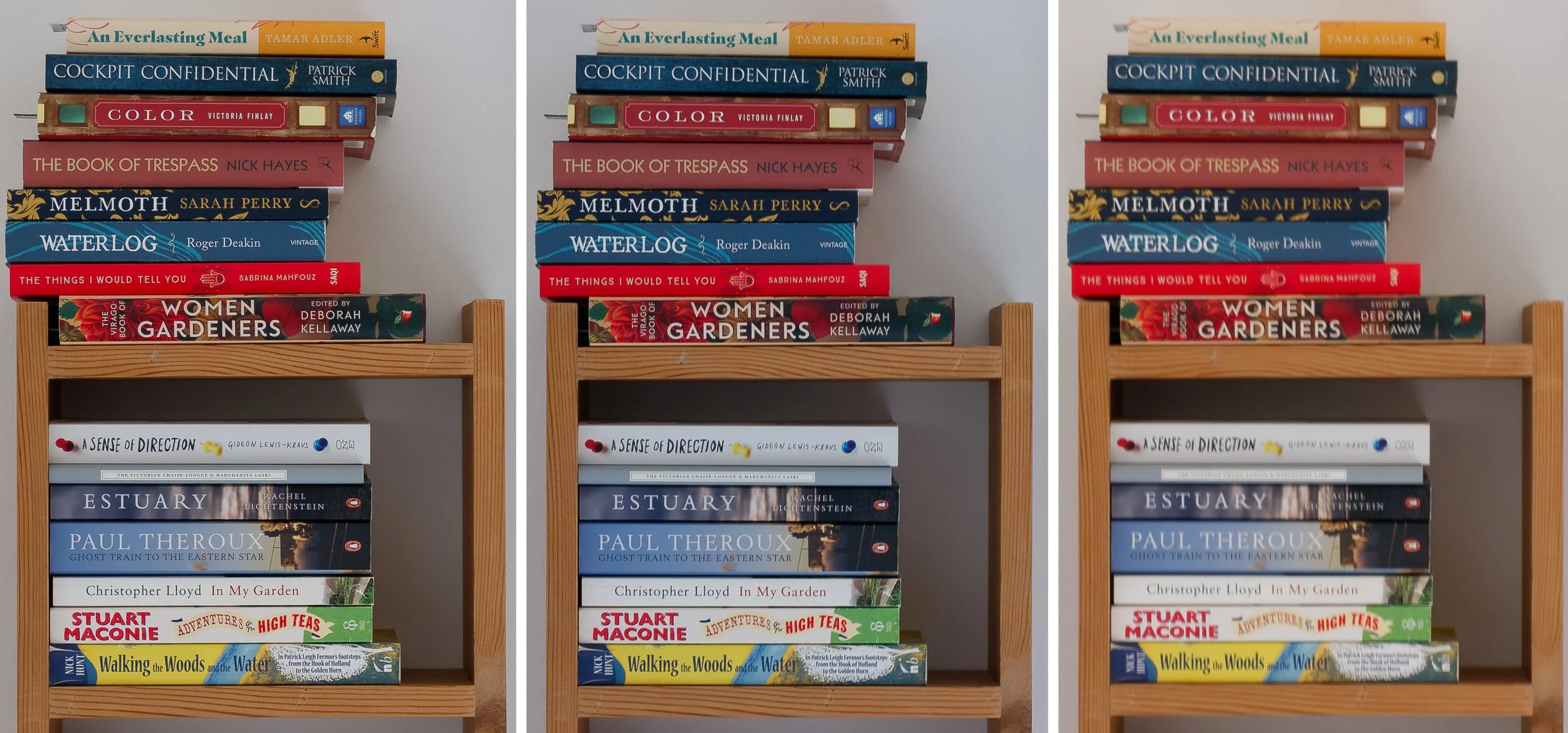This was a test I did earlier this year, but now that the nights are very long, I thought it was worth putting this on the blog.
This was a very simple test using my Sony A1 with the 24-105mm f/4 lens to see how effective image stabilisation is in real life. I wanted to compare the proportion of sharp images that I get at different shutter speeds with and without image stabilisation switched on. There is dual image stabilisation here – both the camera body and the lens have image stabilisation. In the graphs shown above, both were on or both were off. Why this lens in particular? This is my general-purpose get-stuff-done lens. If there’s one lens I’m going to have with me when I’m out doing PBWA*, it is this one. It is quite large and somewhat heavy, but its usefulness makes it well worth understanding its limitations.
For this test, I photographed a bookshelf at about 3m distance with the lens set to 50mm in all cases, hand-held. For each shutter speed, as indicated on the graph, I shot sets of 10 images (using single image with mechanical shutter) three or four times for each shutter speed (i.e. up to 40 images by shutter speed in total). Then I brought the files into Photomechanic and examined them at 200% magnification. I was very stringent – any sign of a motion blur marked the image as unsharp. There were many images that I marked as unsharp, which would probably make perfectly nice 8" x 10" prints or social media posts, but for this test, I wanted to be as reasonably stringent as possible. For each shutter speed group, I calculated the overall percentage of sharp images.
To cut a long story short, the graph above shows the results. Since f/ stops are on a log scale, I plotted the data as a semi-log plot. This gives a surprisingly nice straight line for both the stabilised and unstabilised sets of data. The simplest approach to determining the effect of image stabilisation is just to compare where no (or nearly no) sharp shots were obtained. In the unstabilised case, that was at 1/13sec. For stabilised images, it was 1/2 sec. This indicates roughly just over 2 stops of image stabilisation. By comparison, using an unstabilised 50mm lens previously, by the same measurement, I found about 1 stop stabilisation. So, in my hands, in-body and in-lens stabilisation each contribute about 1 stop of stabilisation. Useful, but not Earth-shattering.
Note that these results only refer to this test in my hands and by my standards of determining sharpness. But even so, it is a long way short of Sony’s claimed 5 stops of IS. Those are CIPA standard tests: “pitch/yaw shake only”. I’ve no idea how that relates to my wobbly hands, but it is clearly different. Standardised tests are good in that they ought to allow comparisons across different camera models, but, for me, they don’t help with predicting how stabilisation actually works when I’m using a camera.
*PBWA — photography by wandering about

